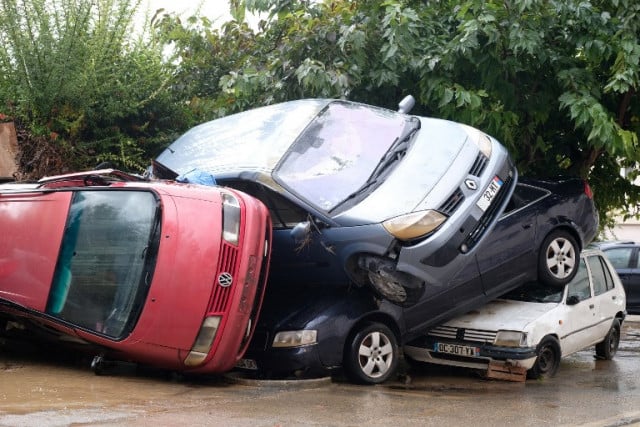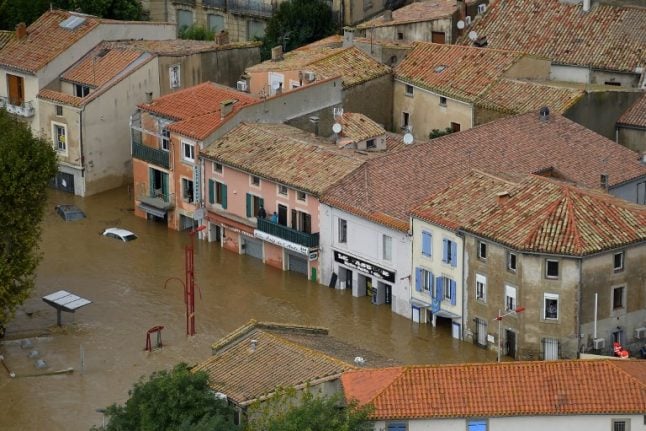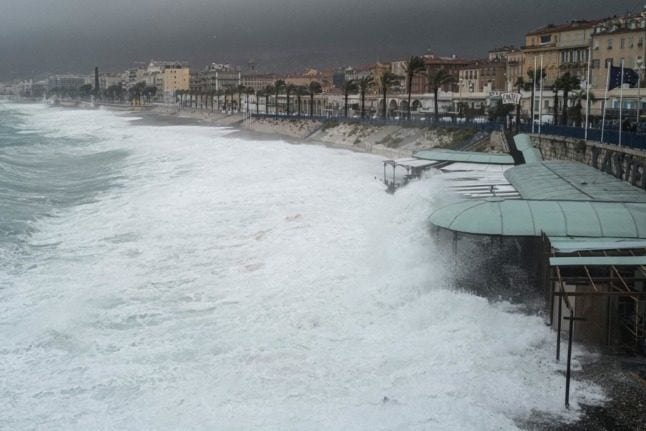The sleepy medieval town of Trebes was targeted by a gunman in March who killed four people during a rampage that saw him take shoppers and staff hostage at a local supermarket.
The attack became a focus of global attention when a police officer at the scene, 44-year-old Arnaud Beltrame, agreed to swap himself for a hostage before being killed by the gunman, who claimed allegiance to the Islamic State group.
Seven months later, the Super U supermarket, like much else in Trebes, has been swamped by devastating storms that ripped through the region of southwest France near the city of Carcassonne on Sunday night.
At least 11 people have died in the flooding in the Aude area of France and three people are missing after violent rainstorms turned the normally placid local rivers into raging torrents that washed away bridges, roads and homes.
A woman named Martine Mazieres, who lived in nearby Villedubert has suffered a triple bereavement in the terror attack and flooding.

Her husband, a 61-year-old retired winemaker named Jean Mazieres, was the first victim of the jihadist after he was shot dead in a parked car in an apparently random shooting.
The woman's elderly parents, both in their 80s, were washed away Monday by waters of the Aude river, which officials say rose eight metres (26 feet) in just five hours.
“It's horrible. The widow has lost both her parents,” a neighbour, Valerie Puerta, told AFP. “Every day a nurse would come to check on the couple.They lived by the river in Trebes.”
Another neighbour named Nathalie told Le Parisien newspaper: “When I heard that the town was affected I immediately thought of Martine because I knew that her parents lived in the most affected area.
“I thought it wasn't possible she could be affected once again. I'm horrified. “
Marc Rofès, the mayor of Villedubert, the village nearby Trebes where Martine Mazieres lives said: “I naturally went to visit her and the first thing she said was that she felt that fate was against her.
“I saw her on Monday morning, she was angry because she could not get any news from her parents. At that moment, she was simply worried. Who would have thought she would once again be confronted by mourning,” said another neighbour named Monique.



 Please whitelist us to continue reading.
Please whitelist us to continue reading.
Martine Maziere must be suffering a living hell
If God exists, he has a very warped sense of humour.